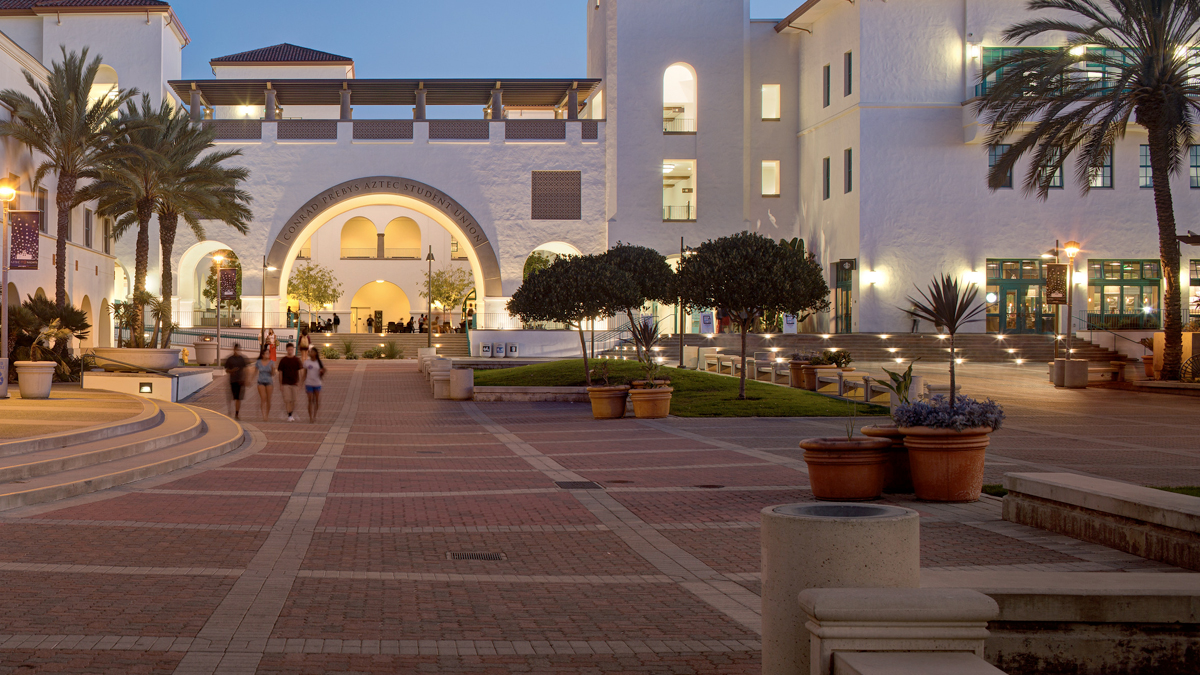Social Media Guidelines
Official pages must be approved.
All official, SDSU-affiliated social media channels must be supervisor-approved and routed to Strategic Communications and Public Affairs (StratComm) before being published. Always plan for a staff or faculty member to oversee and monitor the official SDSU social media account if students are contributing to the account. The employee providing oversight must also maintain administrative rights on the social media accounts.
Be respectful and responsible.
While managing SDSU social media accounts (division, college, program or other unit-level accounts), be mindful both of what you are including and be mindful of how the information will be received. It is not the university’s intent to post anything that is illegal (such as obscene, defamatory, or libelous) or that is contrary to its mission and principles.
Keep legal and policy requirements in mind.
University social media accounts are subject to existing legal and policy requirements. Individuals contributing to SDSU-affiliated social media accounts must follow university policies and federal requirements such as the Family Educational Rights and Privacy Act (FERPA), Title IX, and Health Insurance Portability and Accountability Act (HIPAA) of 1996.
Be selective. Not everything needs a response.
SDSU is a large public institution and, as such, is open to criticism about any number of operational or policy actions. When you see criticism online, don’t take it personally, and don’t feel compelled to respond to every criticism. If you have the ability to correct an error or factually incorrect statement, or give someone direction to a web page that does so, that’s helpful.
Protect confidential and proprietary information.
Social computing blurs many of the traditional boundaries between internal and external communications. Be mindful of the difference. Sensitive information should never be shared via social networks, even via “Direct Messages” that are considered private. Mistakes happen, and in the world of social media, they spread rapidly and they are impossible to take back.
Be careful when using multimedia elements, including photographs, video images, printed materials.
Be aware of the media (photos, videos, GIFs) used in social media posts. All media used should be high-quality and related to your department or organization. Do not use copyrighted photos, video or music without permission or license for use. The SDSU photo gallery is also available to the campus for university use.
Seek consultation with StratComm by emailing [email protected] to ensure that you have the correct intellectual property rights to use the image. Similarly, ensure that you have appropriate rights before posting any copyrighted written materials.
When photographing people for print, web or video projects, please use a model release form for adults or a minor model release form for children under 18 to ensure that subjects are aware of reproduction and usage rights of their image.
Be active and protect the voice of the university.
Remember to update and monitor SDSU social media accounts regularly. Posting relevant and timely content is key to establishing a successful social media presence. Additionally, it’s important to remember that social media is not a one-way street. Actively responding to comments and engaging with your audience will keep your followers interested. When interacting with your audience, protect the voice of the university by engaging in a professional, respectful way.
Follow San Diego State University brand guidelines.
When creating or maintaining an SDSU-affiliated social media account, follow SDSU brand guidelines. Doing so will create consistent branding across the university’s social media accounts and will show your audience that your page is an authentic SDSU page.
Make it accessible.
Remember the importance of accessibility when creating social media content. This includes using alt-text descriptions on social media platforms that allow you to do so, including captioning on videos, and being aware of color contrast on any social media imagery. For more accessibility information, visit the Accessibility at SDSU website.
Maintain good password hygiene.
Keep your SDSUid password secret. Your SDSUid is your single identifier to securely access many campus information technology services including your email, financial information and academic record. Never share it with anyone, including friends, family, or any email sender claiming to be from Library Hub, Computing Services, or any help desk. Also, do not use your SDSUid password for accounts such as Facebook, Twitter, or your bank, or re-use your personal passwords for your SDSUid password. Also, regularly update passwords for SDSU accounts, either once or twice each year. Strong passwords protect against intrusion by others; consider using a phrase that you will remember, and sprinkle in numbers or special characters to make it even stronger.

